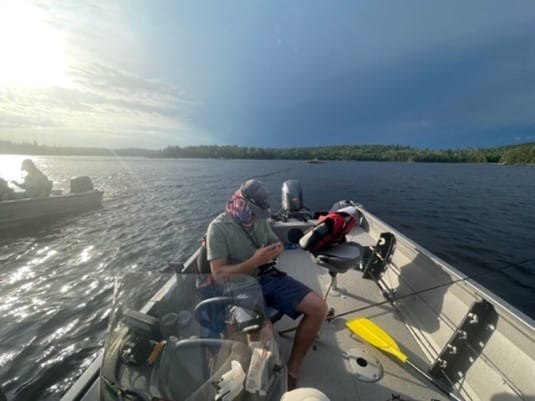Every summer, a group of old college friends and I do a fishing trip in the northern waters of Minnesota on the border of Canada. It’s usually a trek deep into the wilderness where cell phones don’t work and a time to “get away” from the noise. And on an epic adventure like this, one bad decision can really turn your trip upside down.
Well, on our trip last summer, I knew we would be going to no man’s land, Lewis and Clark style. But I didn’t necessarily know how deep. And it’s not like there were any Holiday’s on the shoreline where we were headed. So, I figured having a few extra 5-gallon cans may come in handy.
Fast forward.
The fish weren’t biting as hard as we had predicted because of a record heat wave. So, we kept trying new spots, heading further and further north. I was never too concerned about my gas situation as I had thought ahead, bringing the extra gas. As for my friends in the other boats, I kept thinking, “how do they still have gas?” and “how are they not concerned?” None of them had thought to bring extra gas.
One of my friends in another boat said to me “I’m not too worried about running out of gas, these outboard engines get great mileage. Plus, when the gas gauge is on empty, it still has a long way to go!”
Well, on our final day and trek back to the marina (about a 2-hour boat ride), one of the boats in our group ran out of gas. And we were literally in the middle of nowhere. Lucky for them, I still had one last spare 5-gallon can. If it weren’t for the extra gas, they would probably still be out there! I’m kidding, but seriously – they would have been in bad shape! Luckily, everyone was able to get home safe and sound. The extra gas, that I didn’t know we would need, saved the day.
So why am I telling you this story?
Well, to me it’s a story about adventure, but also about risk. I knew there was a risk of running out of gas. I grew up on boats. I knew there was potential that at some point we could have a gas shortage, worst case. Based on where we were going and how far we would go, it wasn’t probable, but it was possible. So, I planned accordingly. My friends in the other boats? Well, I suppose they just didn’t think they would need it, until they did!
In the same way when it comes to retirement, not every retiree thinks they will run out of money. But as we know, some will. And here in lies why for many clients, the use of an income rider makes sense. Not only does it provide an income safety net, but it can also give retirees the psychological comfort to enjoy retirement, or in other words it can be that extra 5-gallon can of gas, just in case.
Another reason I’m telling you this story: every financial professional reading this has their own particular version of this story. A close call story, a story where having some backup and being over prepared came in handy. And it’s stories like these that can really relate to your clientele when explaining why the use of guaranteed income in their retirement plan can make sense. Stories are the best ways to convey a message.
Lastly, a chart from Wade Pfau’s “Retirement Planning Guidebook”, he shows that when adjusting for lower bond yields, portfolio success rates on a 4% withdrawal rate over 30 years look to be on the high end of 65%, depending on equity allocations. In my opinion, a 65% retirement success strategy isn’t much of a strategy. Running out of money with a 4% withdrawal rate is not probable, but it is possible.



